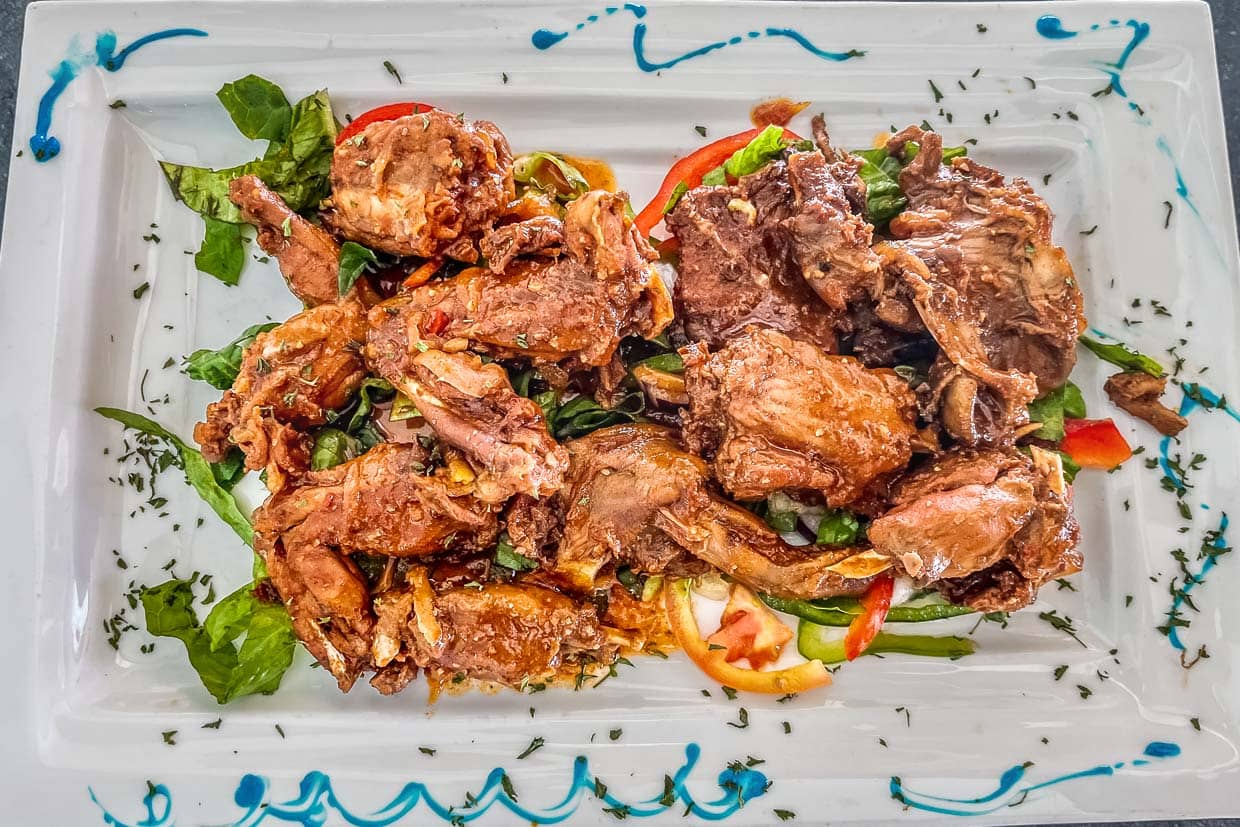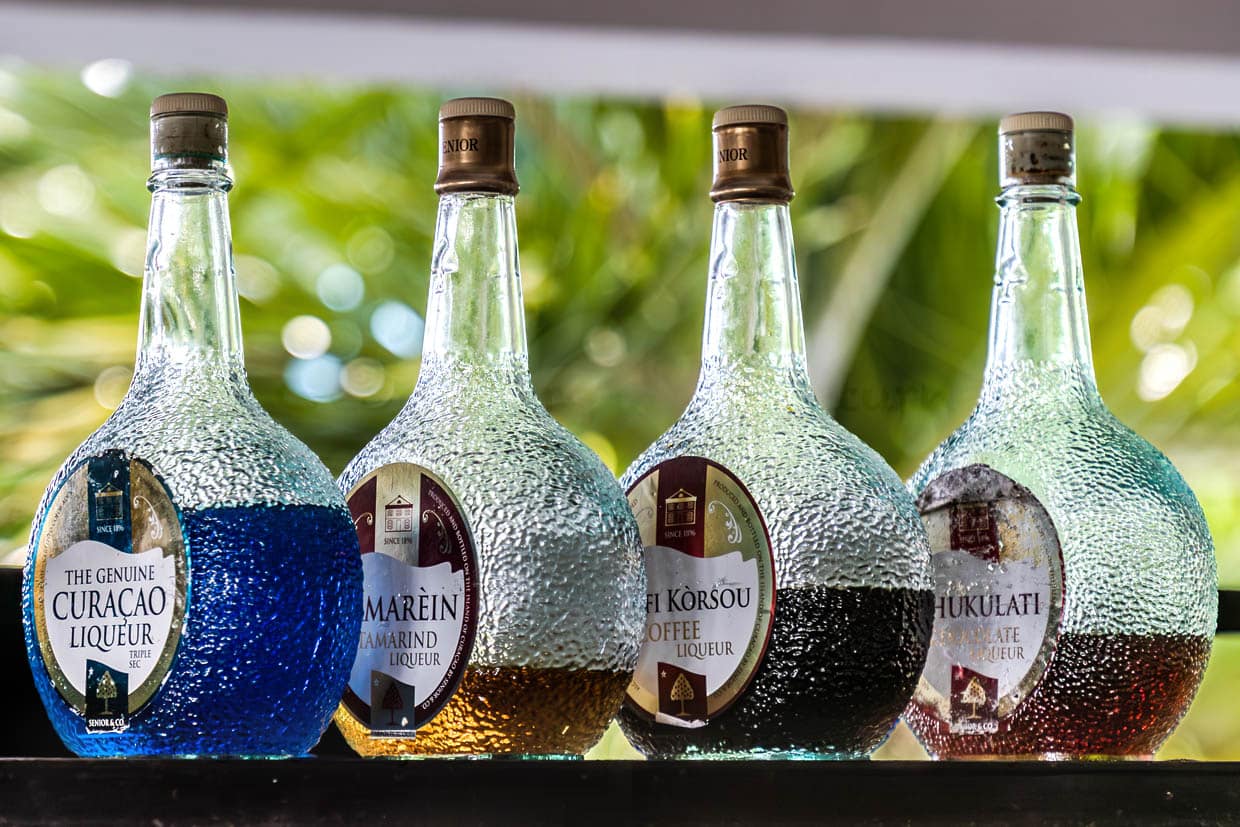The famous Floating Market of Willemstad pulsates in the heart of the Caribbean island. Venezuelan traders moor their boats after a 70-kilometer crossing. At 200 meters, bright yellow mangoes pile up next to plump papayas, juicy pineapples, watermelons, plantains and coconuts. This tropical diversity forms the basis of the island’s creative cuisine. The emergence of Willemstad’s floating market is closely linked to Curaçao’s industrial development. When the Shell refinery went into operation in the 1920s, this fundamentally changed the island’s agricultural economy. Many farmers found better-paid work in the industry, which led to a decline in local food production. This gap was filled by resourceful Venezuelan traders.

Street food and local markets
Willemstad has a particularly lively culinary scene. On De Ruyterkade, the Plasa Bieu is a breezy, rustic market with picnic tables and open kitchens serving classic island dishes. The menus are mostly bilingual in Papiamentu and English – a testament to the cultural diversity. Freshly squeezed fruit juices are on sale in the streets of the city. They are a welcome refreshment in the tropical climate.


Traditional reinterpreted
Helmi Smeulders is a renowned chef under the label Caribbean Spice Girl and represents the new Caribbean culinary culture. The trained lawyer has recorded her recipes from Curaçao, which she has collected over 20 years, in a personal cookbook. In workshops, she shows how to interpret traditional ingredients in a contemporary way. The island’s edible flowers are particularly exciting: the delicate beyísima flowers, only native to the Caribbean, add a subtle touch and visual sophistication to desserts such as papaya cake with lime cream. Moringa flowers, which taste like horseradish, are also used in her cuisine.

From problem to delicacy
There is a special story behind the Ceviche of lionfish with tequila and pomegranate. These lionfish are an invasive species that threaten the reef ecosystem. Resourceful chefs like Helmi Smeulders make a virtue out of necessity – despite the poisonous spines, the meat can be prepared in a tasty way.

Between tradition and innovation
The traditional cuisine of Curaçao is impressively reflected in the lunch dishes. A typical example is the combination of three kinds of fish with spicy pica sauce, accompanied by banana strips and funchi fries. The more adventurous will find Galiña di Palu (iguana ragout) at the Blue View Sunset Terrace restaurant in Westpunt – a local specialty that reflects the islanders’ original use of resources.

Modern fusion cuisine in the MosaCaña Bar & Kitchen
The MosaCaña Bar & Kitchen at Penstraat 41 in Willemstad represents the contemporary development of island cuisine. The innovative concept combines Latin American and Caribbean influences. Local ingredients are interpreted into modern dishes that invite guests to enjoy a convivial meal in the “shared dining” concept. A colorful mural by Francis Sling depicting a peacock and tropical fruits enhances the Caribbean atmosphere.

The bar is stocked with a large selection of rum, tequila and mezcal varieties and is considered a top address for spirits enthusiasts. The bartenders create creative cocktails with precision from the diverse selection of Caribbean spirits.

Local specialties and beverage culture
The culinary specialties of Curaçao can also be found in small details. One example is the tamarind, whose trees are scattered all over the island. The tart pulp of this legume is a popular ingredient in food and drinks.

The island’s drinks culture reflects history and change. While the blue Curaçao liqueur delights tourists, locals prefer other triple sec flavors. There is a special story behind the Brasa beer, whose name means “hug”. The brand was created during the Covid pandemic – as a comfort in a time when real hugs were rare. It succeeded the popular Amstel Bright, whose loss many islanders still mourn today.


The cuisine of Curaçao is closely linked to the life, history and people of the island. Together, the special ingredients and exotic drinks are more than just a collection of recipes – they are a living testimony to the Caribbean way of life, creatively combining tradition and international influences.
Further perspectives on Curaçao
While street art on weathered walls illuminates Willemstad’s street art scene, Swinging Old Lady of Curaçao portrays the historic Queen Emma Bridge. Culinary Journey through Curaçao explores the Creole-Dutch fusion cuisine and Curaçao: Island full of colors shows the characteristic color spectrum of the Caribbean island.
The research was supported by the Curaçao Tourist Board


